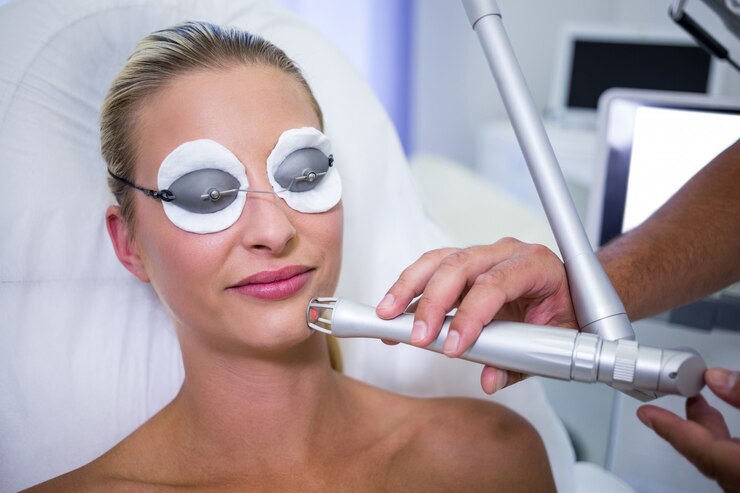In recent years, the wound care industry has undergone a remarkable transformation, fueled by technological advancements and a deeper understanding of healing science. Among the most exciting innovations are smart bandages and artificial intelligence (AI), which are reshaping how wounds are managed. These cutting-edge tools are not only improving patient outcomes but also making healthcare processes more efficient and effective than ever before.
What Are Smart Bandages?
Traditional wound care has largely depended on visual inspections and manual treatments, which can be both time-intensive and imprecise. Smart bandages, however, mark a major leap forward. These advanced dressings are embedded with sensors that monitor key wound conditions in real-time, such as temperature, moisture, pH levels, and even early signs of infection. Some versions also deliver medications or electrical impulses directly to the wound site to accelerate healing.
By continuously collecting data, smart bandages provide healthcare professionals with a comprehensive, up-to-the-minute view of the wound’s status. This reduces the need for frequent dressing changes, making care less invasive and minimizing the risk of infections due to repeated exposure.
The Role of AI in Wound Care
Artificial intelligence plays a crucial role in making sense of the continuous stream of data from smart bandages. Instead of relying solely on human observation, AI systems process the sensor information to spot early warning signs or unusual patterns that might otherwise go unnoticed. For instance, slight shifts in pH or temperature can be flagged immediately, allowing clinicians to respond faster.
In addition, AI can map out expected healing patterns by learning from vast databases of previous wound cases combined with real-time wound conditions. This enables care teams to forecast how a wound is likely to heal and adjust their treatment strategies accordingly, leading to better outcomes and more efficient care.
Benefits of AI and Smart Bandages
The fusion of AI and smart bandage technology brings several important advantages:
- Early Warning Systems: By keeping a constant watch over the wound, smart bandages enable healthcare providers to catch issues before they escalate, ensuring timely intervention and helping to prevent serious health complications.
- Customized Treatment Plans: Thanks to AI’s ability to sift through large amounts of data, treatments can be tailored to each patient’s specific wound needs, improving healing times and outcomes.
- Remote Monitoring Capabilities: With wireless-enabled smart bandages, patients can be monitored from home, making advanced wound care more accessible to people living in rural areas or those who have trouble traveling. This approach also reduces the need for frequent clinic visits.
- Cost Savings: Although the initial investment in smart bandage technology can be high, the overall savings from fewer complications, reduced hospital stays, and more targeted treatments make it a cost-effective solution over time.
Challenges and Considerations
Despite their promise, smart bandages and AI applications in wound care are still developing. Several hurdles remain before they become everyday clinical tools:
- Accuracy and Consistency: It’s essential that sensors and AI systems deliver dependable information. Inaccurate readings could mislead healthcare providers and negatively affect treatment.
- System Integration: New devices must work seamlessly with existing healthcare technologies, like electronic health records and telehealth platforms.
- Regulatory Approval: Smart bandages, like all medical devices, must pass strict testing and approval processes to meet safety and efficacy standards, which can delay their rollout.
- Affordability and Access: Making these innovations widely available, especially in lower-income settings, remains a significant challenge.
The Future of Wound Care
The outlook for wound care is bright, with smart bandages and AI set to play an increasingly central role. Researchers are pushing the boundaries of what’s possible, working on next-generation bandages made with bioelectronic materials and smart hydrogels. These could not only monitor wounds but also respond dynamically—delivering electrical stimulation or controlled doses of medication based on the wound’s real-time needs.
As these technologies evolve, they promise to further improve healing outcomes and make high-quality wound care more accessible to a broader range of patients.
Smart Bandages and AI: A New Era in Wound Care
Smart bandages and AI are driving a new era in wound care, offering real-time insights, customized treatments, and greater accessibility through remote monitoring. Although challenges remain, the potential benefits—such as early problem detection and better recovery rates—are already changing the way wounds are treated. As the field advances, these innovations will likely become standard tools, transforming healthcare systems and improving patients’ quality of life worldwide.
For anyone following the evolution of medical technology, keeping an eye on smart bandages and AI is essential. They aren’t just the future of wound care—they’re reshaping it right now.

